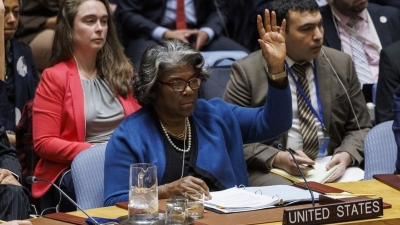More than 40,000 estimated to have died last year as result of Somalia drought

A new report released by the UN and Somalia’s government has found that there may have been 43,000 excess deaths last year as a result of the ongoing drought – half of whom were likely to be children under the age of five. Estimates for the first six months of 2023 also suggest that 135 Somalis might die every day, with as many as 34,200 potentially dying by June 2023. The Horn of Africa country is facing a sixth consecutive failed rainy season, amid a drought said to be related to climate change. Somalia produces a tiny fraction of global emissions, but analysts say it is one of the most vulnerable countries to climate change on Earth. The number of deaths estimated last year in Somalia is higher than the number believed to have died during the first year of the last major drought crisis, in 2017 and 2018. Efforts to quantify the number of deaths have been hampered by the security situation and what aid workers say is a reluctance from the government to admit the scale of the crisis, out of concerns that funding may be redirected towards emergency aid and away from development. There has also been frustration among aid workers that a famine has not been declared, with many telling The Irish Times that they are worried this has distracted attention from the huge number of deaths that have already taken place. Last December, Daniel Molla, the chief Somalia technical adviser at the UN’s Food and Agriculture Organisation – who is involved in collecting data to decide whether a famine declaration is made – said the threshold number of deaths of children required to declare a famine had already been reached in two parts of Somalia, but that other thresholds had not been met. That same month, in a single displaced persons camp in Baidoa, The Irish Times counted 101 graves. They were all said to be children under the age of eight who had died in the previous two months. [ Sally Hayden: A famine that’s not a famine — counting the graves of Somalia’s drought victims ] The study released on Monday was commissioned by the UN and carried out by the London School of Hygiene and Tropical Medicine and Imperial College London. It found that the highest death rates are estimated to have occurred in south-central Somalia: particularly the areas around the Banadir, Bay and Bakool regions. “We are racing against time to prevent deaths and save lives that are avoidable,” said WHO Somalia representative Mamunur Rahman Malik in a statement. “We will see more people dying from disease than from hunger and malnutrition combined if we do not act now. The cost of our inaction will mean that children, women and other vulnerable people will pay with their lives while we hopelessly, helplessly, witness the tragedy unfold.” Somali minister of health Ali Hadji Adam Abubakar said: “We continue to be concerned about the level and scale of the public health impact of this deepening and protracted food crisis in Somali. At the same time, we are optimistic that if we can sustain our ongoing and scaled-up health and nutrition actions and humanitarian response to save lives and protect the health of our vulnerable, we can push back the risk of famine forever... We, therefore, urge all our partners and donors to continue to support the health sector in building a resilient health system that works for everyone and not for the few.” Nearly half of Somalis – almost eight million people – are said to be in need of humanitarian assistance. Neighbouring Ethiopia and Kenya have also been badly affected by the drought.
More than 40,000 estimated to have died last year as result of Somalia drought
Africa faces ‘new Cold War’ as US tries to resist Russian gains
:quality(70)/cloudfront-eu-central-1.images.arcpublishing.com/irishtimes/NY3RFTIDF53DPJWFX6BFK45DRU.jpg)
‘Now there is less fear.’ Baghdad’s youth reclaim their city, 20 years after US-led invasion
:quality(70)/cloudfront-eu-central-1.images.arcpublishing.com/irishtimes/CGHRF6OMPFS6ODFNLEBQJMWDRI.jpg)
Washington’s victory in Iraq did not liberate but imprisoned the country in warfare
:quality(70)/cloudfront-eu-central-1.images.arcpublishing.com/irishtimes/JQFR6DBAGNFJLF4T56DQEFVFZU.jpg)



